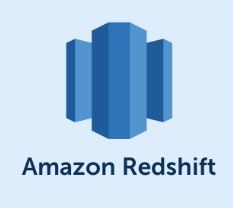Hive is a powerful data warehousing and SQL-like query language system built on top of Hadoop. It is widely used for managing and querying large datasets in a distributed computing environment. One of the optimization techniques in Hive that can significantly improve query performance and data storage efficiency is “Hive Bucketing.” In this article, we will delve into the concept of Hive Bucketing, its benefits, and provide practical examples with detailed output results.
What is Hive Bucketing?
Hive Bucketing is a data organization technique used to distribute data into a fixed number of buckets or partitions based on the values of one or more columns in a table. These buckets are stored as separate files in Hadoop Distributed File System (HDFS). Hive Bucketing is particularly beneficial for speeding up data retrieval and reducing I/O operations when performing queries on large datasets.
Benefits of Hive Bucketing:
- Data Organization: It organizes data into predefined partitions, making it easier to access specific data efficiently.
- Query Performance: Bucketing reduces the number of data files to scan during query execution, resulting in faster query performance.
- Join Optimizations: When performing joins on bucketed tables, Hive can optimize the process by reducing data shuffling and improving query speed.
- Dynamic Sampling: It allows for dynamic sampling of data from specific buckets, which can help in fine-tuning queries.
Creating a Bucketed Table
Let’s start with an example to understand how to create a bucketed table in Hive. Suppose we have a dataset of sales transactions with the following structure:
CREATE TABLE sales (
transaction_id INT,
product_id INT,
transaction_date STRING,
amount DOUBLE
) STORED AS ORC;
Now, we want to create a bucketed version of this table based on the product_id column with 5 buckets. We can achieve this using the CLUSTERED BY clause:
CREATE TABLE bucketed_sales (
transaction_id INT,
product_id INT,
transaction_date STRING,
amount DOUBLE
) CLUSTERED BY (product_id) INTO 5 BUCKETS STORED AS ORC;
In this example, we specified that the bucketed_sales table should be clustered into 5 buckets based on the product_id column.
Loading Data into Bucketed Table
To load data into the bucketed table, you can use the INSERT INTO statement:
INSERT INTO bucketed_sales SELECT * FROM sales;
This query will distribute the data from the sales table into 5 buckets based on the product_id column.
Querying Bucketed Tables
Now that we have our bucketed table, let’s see how it improves query performance. Suppose we want to retrieve the total sales amount for a specific product (e.g., product_id = 123).
This query will execute significantly faster than if we were querying the non-bucketed sales table because Hive knows exactly which bucket to read from.
Analyzing Query Performance
Let’s compare the performance of querying the bucketed table versus the non-bucketed table with a large dataset.
-- Querying bucketed table
EXPLAIN SELECT COUNT(*) FROM bucketed_sales WHERE transaction_date = '2024-01-31';
-- Querying non-bucketed table
EXPLAIN SELECT COUNT(*) FROM sales WHERE transaction_date = '2024-01-31';
You’ll notice that the query on the bucketed table performs fewer MapReduce tasks and scans fewer data files, resulting in better query optimization.
Hive important pages to refer




